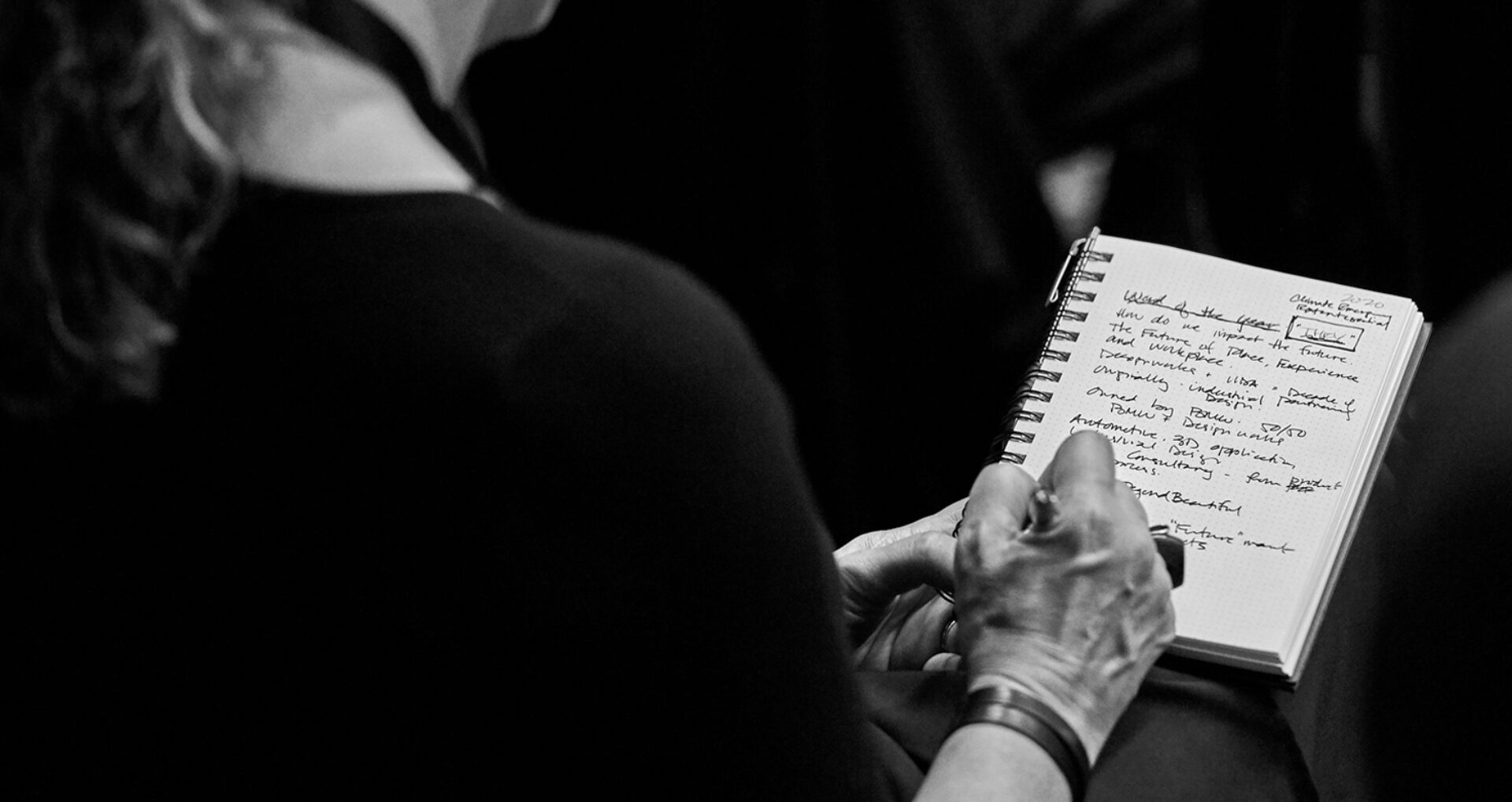The following is an excerpt from IIDA’s annual Industry Roundtable report, Industry Roundtable 23: The Future of Place, Experience, and Worklife. The roundtable took place at BMW Designworks in California. Read the full report here.
Open plan versus closed door; solo versus collaborative; heads up versus heads down; “me” space versus “we” space. How can clients describe exactly what form (or forms) “work” takes in their workplace? And, on the flip side, how can designers wrap their heads around the minutiae, mechanics, and methodologies that undergird productivity in their clients’ physical environments?
Despite that many of today’s workplaces are embedded with sensors that capture abundant information about spatial use, Big Data is no panacea when it comes to assessment and evaluation. “We are capable of developing AI and machine learning, but we haven’t been able to provide any of our data [for those efforts],” says Kyle Hamblin, vice president of Capital One. “There are still privacy hurdles to jump over.” So, they mostly use their eyes and ears. “We do observations, surveys, interviews, and videos. That’s not scalable or efficient, but we get a lot of good information that way.”
Clients look to designers as experts in human behavior to provide deep insights and analysis—not only about what they observe happening in the client’s own organization, but also what they notice and observe in other workspaces. Speaker Julia Feldmeier, journalist and brand anthropologist, draws on her dual background in journalism and consumer research, and suggests ways designers and manufacturers can approach information- gathering during the programming stage and beyond to uncover a deeper truth about what end-users want and need. In our quest to gain the clearest picture of human behaviors in spatial environments, we need to challenge our assumptions, check our biases, and open our minds to all possibilities, no matter how seemingly counterintuitive or irrational.
During interviews, ask people about only what they know.
Get specific with behaviors and values and ask the right questions. A query like “what do you do at your desk?” is too vague. Try: What is making you happy right now? Where are you most comfortable? Would you rather have things arranged for you or do you prefer having the agency to arrange them yourself? “Let them tell their own story, let it breathe, and really listen to it,” Feldmeier advises.
Don’t always trust what they say!
Human interview subjects are notoriously unreliable narrators, so take everything with a grain of salt. Interviewees lie all the time, for all kinds of reasons: because they are embarrassed (an effect called social desirability bias) because their actual behaviors don’t align with how they perceive them, or because they’re not in the right mindset or context.
A neutral, flat-faced affect will elicit the most truthful answers.
Being nonreactive creates an interview environment in which the subject feels that all answers are equally acceptable. Avoid responding with prompts like, “That’s so interesting; tell me more.” Any positive reaction on your part will subconsciously encourage the interviewee to give you more of that same information rather than the complete picture.
Get out and observe the real world—the one in which your customers work.
Don’t rely on self- reporting or questionnaires alone, or grilling end- users while they’re sitting around the boardroom table. “Focus groups are artificial situations rife with bias,” Feldmeier explains. “You get peer pressure, subjects wanting to elicit approval, and moderator bias.” Instead, scrutinize firsthand how subjects behave—in the real world, versus a lab or focus group setting, ideally in the same context as the one in which they’ll actually be using the product or performing the work. Things to make note of during observations:
- What is common behavior?
- What is different and interesting?
- What are a lot of people doing?
- What are just a few people doing?
Ditch your bias.
“Assumptions are confining,” says Feldmeier, “and will make you overlook a lot of truths.” As an example, she cites the Mars Company’s decision to start selling Mars bars in the Russian market after the fall of the Iron Curtain. Turns out that ice cream sold like hotcakes during the wintertime…but not at all during the summer months. Execs scratched their heads until they eventually realized that refrigeration was not yet ubiquitous in Russia, and items that needed to be kept cold were only viable in chillier months. Had market researches actually observed how Russians lived at the time, versus making uninformed assumptions based on their own Western lifestyles, they would have discovered this truism much earlier.
Embrace the irrational.
Don’t lock in on just one data point; instead, “get all your data in a room and see what it tells you,” Feldmeier says. “Let the data points quibble with each other and see what happens: Do they line up? If there’s an outlier, what is that tension?” Those outliers tend to lead to the most innovative ideas and solutions.
Context doesn’t just matter—it’s everything.
There is a tendency for research results to become “sanitized” by the time they’re collated and presented to clients or higher-ups in a deck. “The context is stripped away, and the information comes out like bland chicken wings,” says Feldmeier. Better is to approach the complete information like a mosaic: “You can roll up close to see all the vignettes, and then back out to see the big idea without losing sight of what makes it real,” says Feldmeier. “Those vignettes are the things that will make you think about change.”
Follow up.
Things are always changing; the story is never complete!
The percentage of time that people are not at their desk is so surprising. The more we provide other types of spaces, that’s where people gravitate.
Kyle Hamblin, Capitol One
